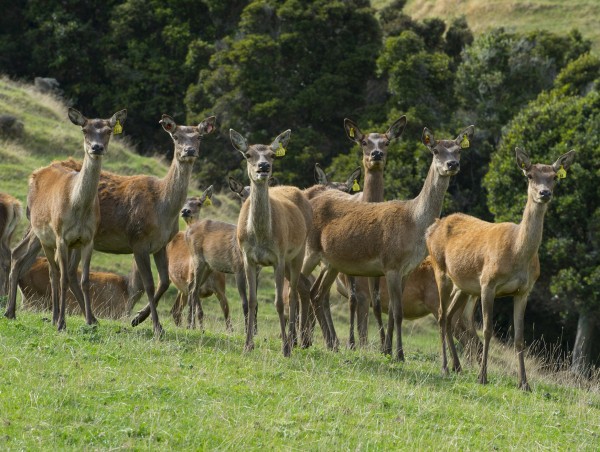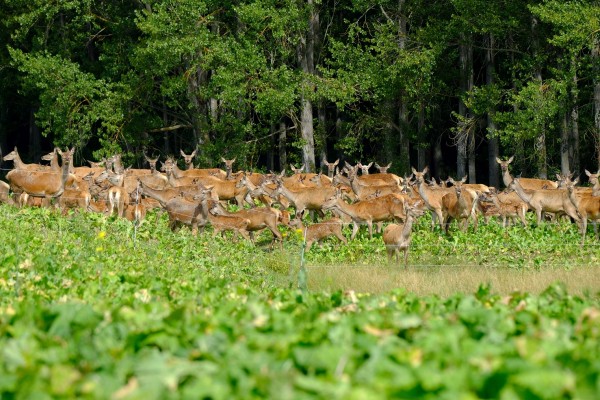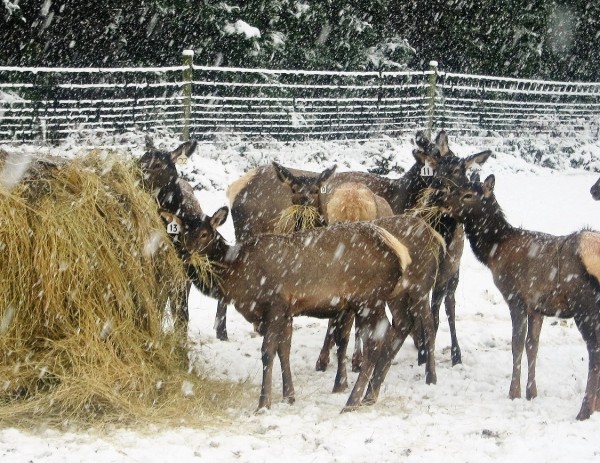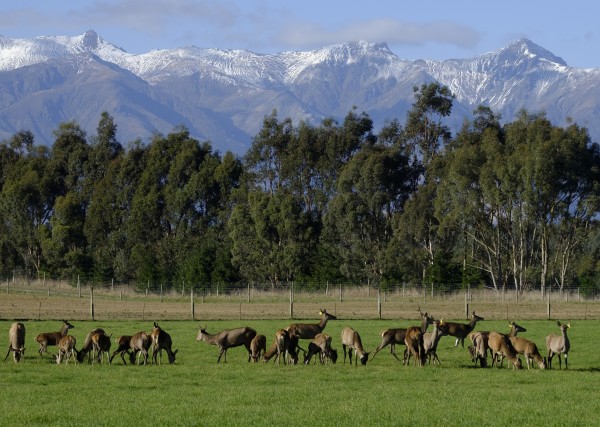
Breeding hinds on an Otaki, North Island, farm
There are about 1400 deer farms in Aotearoa New Zealand, running a total of 833,000 deer (2020), of which 582,000 are in the South Island.
Deer farms are found throughout the North and South Islands on most land classes and climate zones. This reflects the innovative husbandry of deer farmers and the adaptability of farmed deer.
However the largest herds tend to be found in regions with assured summer rainfall, or access to irrigation – the central North Island, Hawkes Bay hill country, South Canterbury and in the high country of Canterbury, Otago and Southland.
This is because hinds (female deer) give birth in late spring/early summer – much later than sheep or cattle. Summer rain or irrigation is needed to grow the lush pastures or forage crops that grazing hinds need to grow their fawns rapidly through summer so they reach healthy weights before winter.

Hinds and fawns grazing a forage crop in late summer when normal pasture growth is slow. The crop will ensure the hinds have plenty of milk to feed their fawns
Deer farms range in size from lifestyle blocks through to very large high country stations, with many in the 250 to 1000 hectare range. Most farms also run beef cattle and sheep. This spreads market risks and has management benefits for animal health and pasture quality.
Farmers move their deer regularly from paddock to paddock – a practice known as rotational grazing. Often the deer go first in the rotation, followed by sheep and cattle. The pasture is then given time to regenerate.
Rotational grazing improves pasture quality and ensures deer have access to clean feed. The regular interaction with stock managers also calms deer and helps them to adapt to routine farm management activities.
Deer pastures are made up of grasses, clovers and herbs. Farmers usually apply a little fertiliser each year to replace the phosphate that leaves the farm in farm produce. Phosphate, along with nitrogen and other nutrients, are essential for animal and plant health. Phosphate is needed by clovers to ‘fix’ nitrogen from the atmosphere into the soil, as part of the natural nitrogen cycle.
Most NZ soils are naturally acidic, so ground limestone is applied on most farms every few years. This aids soil, pasture and animal health.

Deer eating hay during a snow storm in mid-Canterbury. Deer are well adapted to snow, so long as they have access to good feed
During winter and in droughts, when grass growth slows, deer may be fed on forage crops, like turnips or kale, and conserved pasture, such as hay and silage. They may also be given small quantities of grain, nuts and other plant-based supplements to balance their diet while they are on crops or conserved feeds.

Hinds and fawns quietly graze at Cathedral Peaks Station, Fiordland
Deer farmers keep a close eye on their deer to make sure they are healthy and well-fed. But for most of the time New Zealand farmed deer are left to do what they like doing best – being deer.

